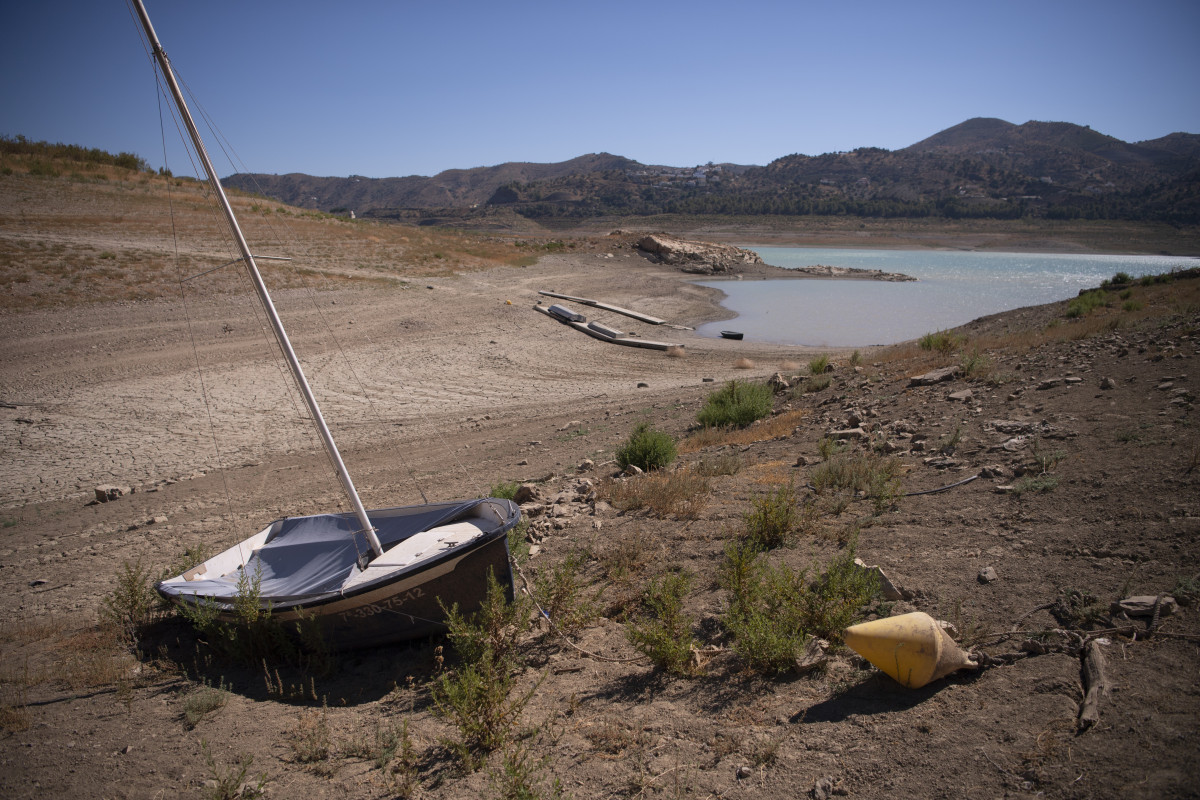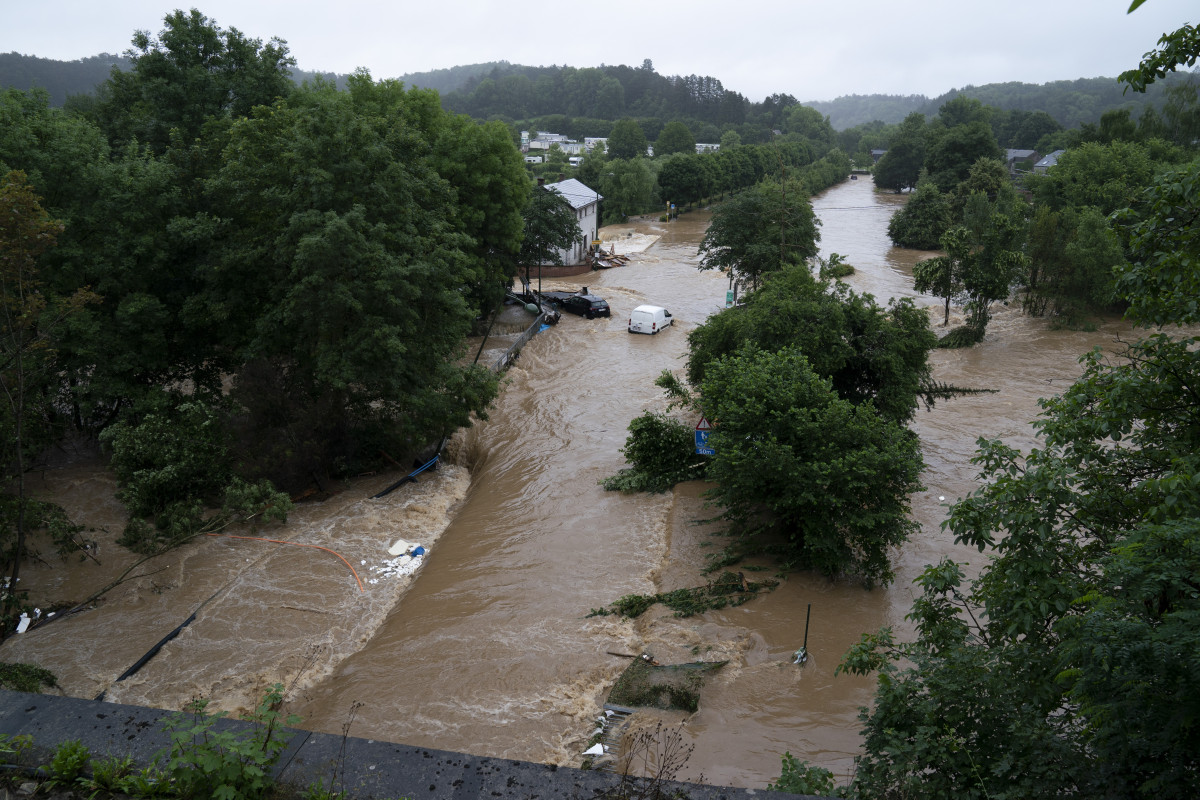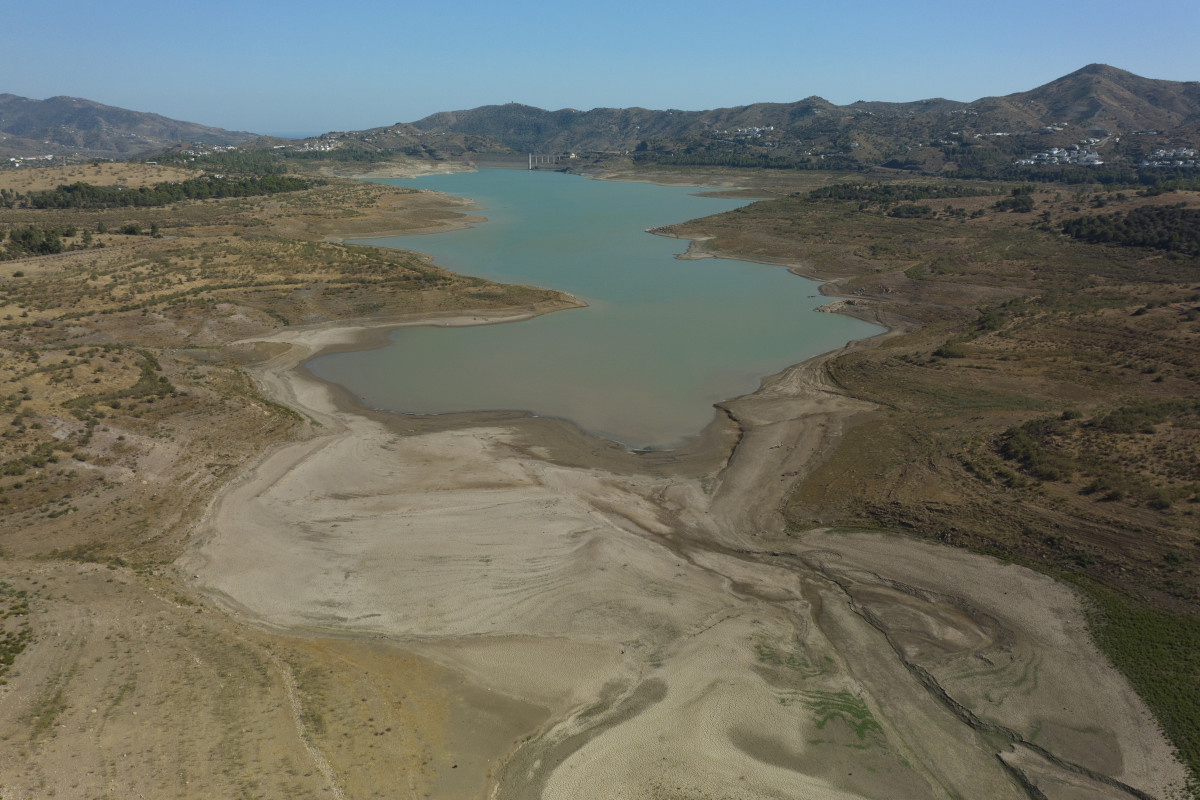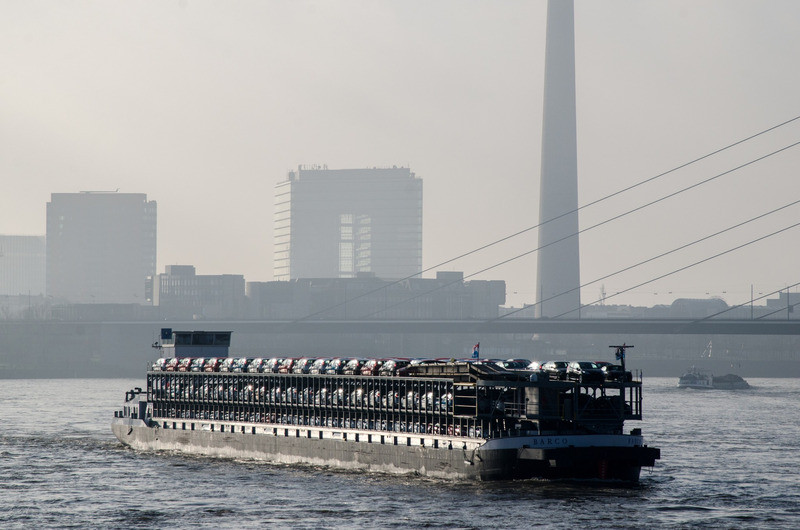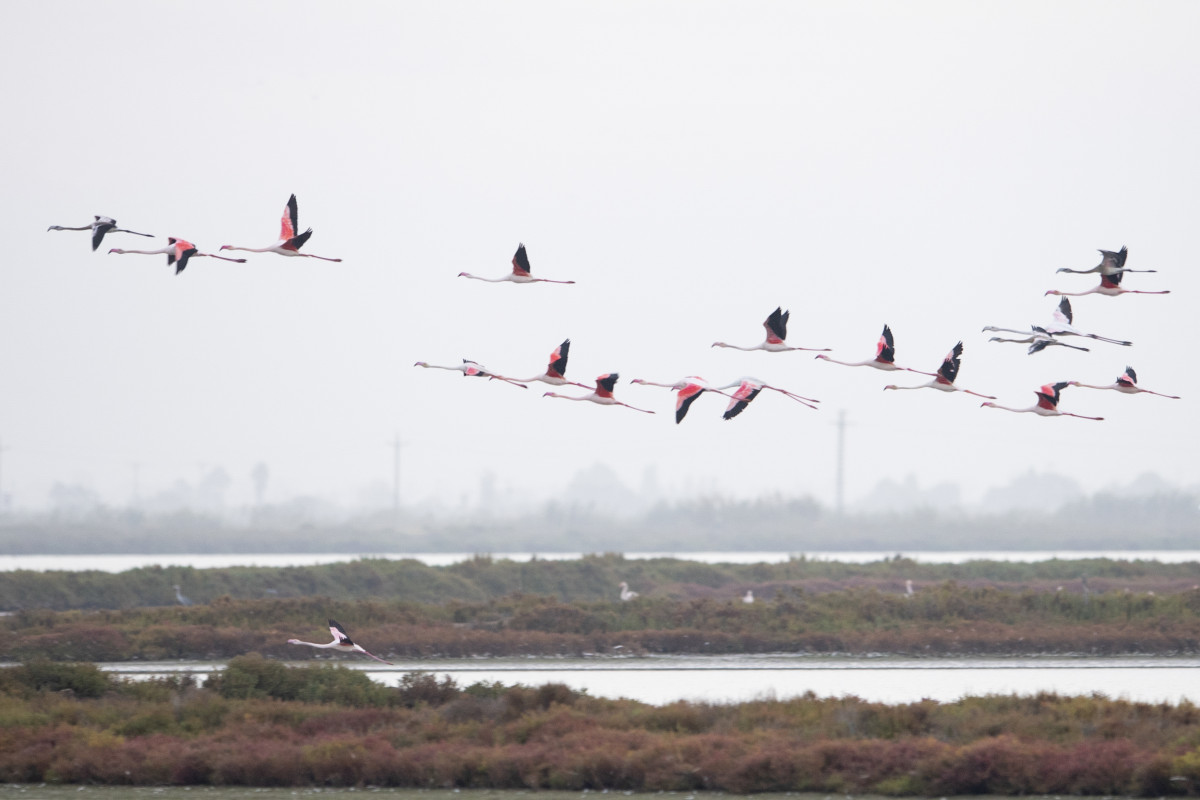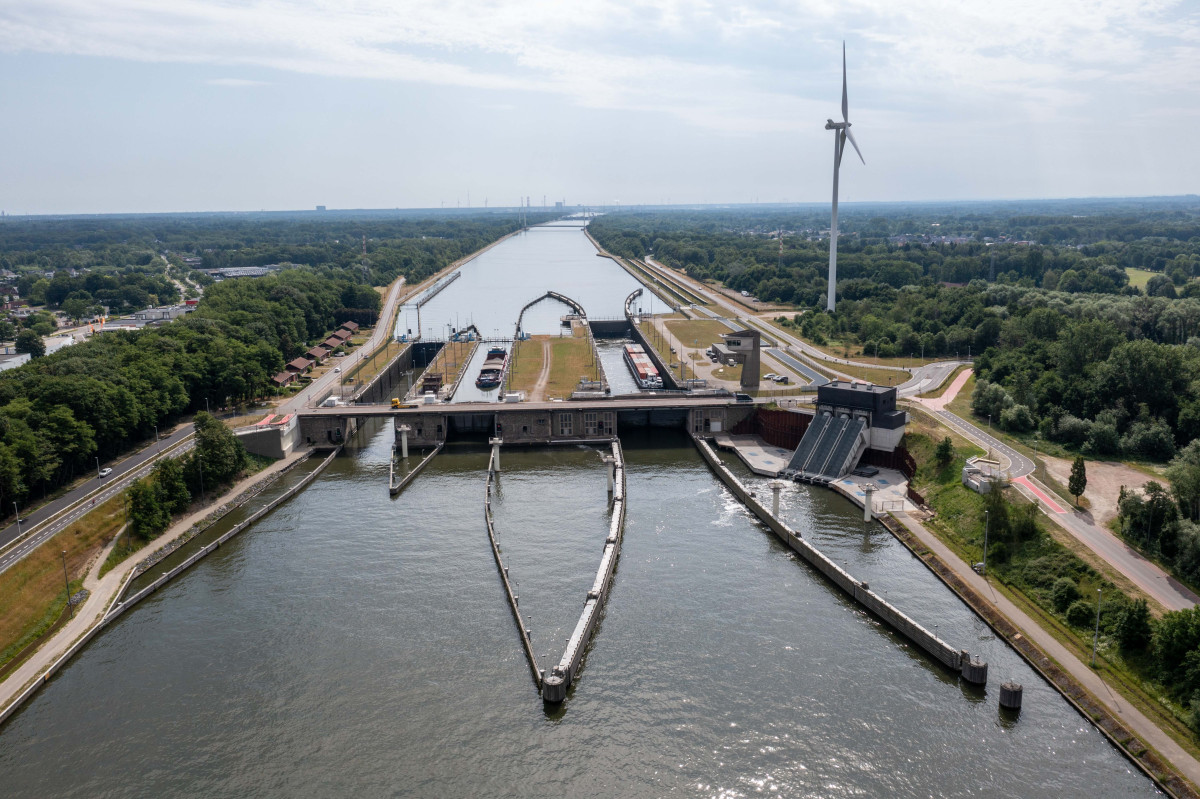The race is on to climate-proof Europe’s water resources
When water must be rationed in times of drought, whose supply is prioritised, and who takes the first hit? The environment, public supply, industry, or agriculture? How will conflicts be solved? These questions must be settled as the increasingly devastating effects of climate change are putting European water resources under mounting pressure.
Having too much, as well as too little, water is already leading to cascading problems affecting whole economies. Human lives and infrastructure are on the line if caught unprepared; industrial production is interrupted as barges struggle to navigate shallow rivers; energy production is cut as power plants can’t use river water to cool reactors, and hydropower generation comes to a halt; crop yields drop too as plants struggle to extract water from dried-up soil, jeopardising food security.
European water management must be at the centre of our fight against the climate crisis.
Water resources are critical for human health, the environment, and a wide range of socio-economic sectors such as agriculture, energy production, inland waterway transport and tourism. Pressure on them is snowballing because of climate change: extreme weather events such as heavy rain (resulting in floods) and drought (leading to water scarcity) will happen more often, last longer, and increase in intensity unless global warming is limited.
The extreme droughts of 2018 and 2022 across large parts of Europe, as well as the devastating floods in Germany, Belgium and the Netherlands in 2021 and in Slovenia this year could become the new normal without mitigation and adaptation measures, scientists warn.
As Europe experiences more frequent water shortages – especially in the Mediterranean region – competition over shared water resources is on the rise. Environmental activists and farmers have clashed in France and Spain, with the sides disagreeing over how the resource should prioritised.
The threat of conflict isn’t limited to interest groups: Germany and Poland have different views on how the Oder – a shared river – should be managed, and tensions between Spain and Portugal have been boiling to the surface, following consecutive years of extreme drought and retreating water levels in reservoirs.
Legislation was made when water was abundant
The European Union has been working to protect its water resources for decades with legislation such as the Water Framework Directive, which came into effect in 2000. The bloc has made significant progress in regulating water quality, wastewater treatment, flood risk management, and freshwater habitat and species protection, according to the European Environment Agency (EEA).
However, Europe’s water policy was developed at a time when supplies were abundant and one of the biggest issues was cross-border pollution, meaning the focus was mainly on water quality and ecological considerations.
EU water law and numerous treaties “almost comprehensively ignore” climate change-related challenges such as how much water should flow across borders. This is despite the projected massive future fluctuation in river flows, according to a 2019 report published in the Water Policy journal. A separate 2020 report researching the resilience of EU water governance across borders found that the legal framework is unfit to handle international competition for water in regions where climate change intensifies its scarcity.
“European water management must be at the centre of our fight against the climate crisis,” Benoît Biteau, Greens Member of the European Parliament, said in 2022.
Progress to future-proof Europe’s surface water varies substantially between regions, and few projects address the problem with solutions that include all water users, according to think tank adelphi. Moreover, EU-funding focuses on the generation and sharing of knowledge, but less so on on-the-ground implementation. Finance for transboundary projects is hard to access, the think tank concluded in a background paper assessing Europe’s water resilience in the face of climate change.
According to an EU evaluation, water legislation is broadly fit for purpose and flexible enough to accommodate for challenges such as climate change and emerging pollutants, but there is room for improvement when it comes to implementation, funding and integrating water into other policies.
Europe’s most important waterway under pressure
The Rhine and its tributaries, which reach into nine countries, highlight the pressures faced by water resources amid climate change in Europe. They are the source of drinking water for some 30 million people, and power over 20 hydropower plants. The Rhine is by far the most important shipping route in the continent: about two thirds of European waterway transport pass through it.
But in 2018, 2022 and 2023, low water levels following a summer drought severely restricted inland navigation, with costly consequences for the manufacturing, chemicals and power industries.
A significant reduction in meltwater from snow and glaciers, which are crucial for maintaining base river levels during the dry summer and autumn months, will further exacerbate the problem, considerably affecting everyone who uses water along the Rhine, according to the Commission for the Hydrology of the Rhine Basin (CHR), a transnational scientific body.
These natural weather events, coupled with surging demand from human activities, are set to increase the stress on water resources. Switzerland, for example, where the Rhine and other major European rivers originate, wants to retain more water to secure electricity supply (the country produces around two-thirds of its electricity with hydroelectric power plants and reservoirs) and produce snow for its ski slopes.
Countries downstream such as Germany, France and Italy – which need the water for irrigation, especially during dry months – would feel the pinch, since run-off from the Swiss Alps replenishes water levels in the Rhine, Danube (which flows through much of Central and Southeastern Europe), Rhone (a major river in France and Switzerland) and Po (Italy’s longest river). To address this, Switzerland’s government wants to adapt and create new international arrangements to reconcile different needs.
“You always have to think about river basins in a transboundary way because water doesn’t stop at borders,” Marc Daniel Heintz, head of the International Commission for the Protection of the Rhine (ICPR), of which Switzerland is a member, told Clean Energy Wire.
The ICPR has been working for decades to protect the entirety of the Rhine, and recently stepped up its efforts to address the effects of climate change. “We are a little bit like a small United Nations; the countries meet in our commission to negotiate objectives of the Rhine policy,” Heintz said.
The commission has no direct political leverage but, by discussing things together at the same table, countries can influence each other’s politics, he explained. Between other rivers, the Elbe (which flows from the Czech Republic through Germany), Danube (the second longest river in Europe) and Meuse (which goes from France and flows through Belgium and the Netherlands) all have transnational commissions set up to coordinate their protection.
“In the end, every country has its national government, and in the government, water is only one topic. Climate protection, energy production and river navigation are all important, and somehow it all has to be reconciled,” Heintz said.
Who does water belong to when it becomes scarce?
European regions use their water differently. Agriculture is the biggest use of water in Southern Europe and, as it gets hotter, surface water evaporates faster and groundwater reserves dry up. Crops will therefore require greater irrigation, which will in turn drive demand up. Separately, water extractions for energy production, followed by public water supply and industry, make up a large share of water demand in Central and Western Europe.
“Whether agriculture, industry or consumers will have to take the first hit if we need to save water or even ration it […] is a politically charged question,” Ralf Ludwig, geography professor at the Ludwig Maximilian University of Munich (LMU), said. It is important to answer the questions both locally and internationally: Europe is home to the highest number of shared river basins in the world.
“When it comes to water allocation [in case of supply bottlenecks], the public water supply has outmost priority in Germany,” Hagen Koch, a senior scientist at the Potsdam-Institute for Climate Impact Research (PIK), told Clean Energy Wire. “This is followed by industry, especially power plants, because if there is a cut in power supply, waterworks can no longer pump water, and customers in turn are left without it.”
Per cubic metre of water, industry generates more income than agriculture, and vegetation can resist some water stress. Industry, therefore, would be prioritised. All the while, a certain amount of residual water must always remain in the rivers and lakes to protect ecosystems, Koch continued.
Cooperation across borders and sectors is on the rise
Most of Europe’s transboundary watercourses and lakes are subject to at least one treaty, which requires active cooperation between parties and means measures such as dam operation or water extraction should be coordinated between the upper reaches of a river and downstream. This cooperation, for example, ensures a minimum amount of water flows from one region into the next.
Crucially, exemptions to these treaties can be granted under extreme circumstances, such as a noticeable lack of rainfall compared to historical averages or, for instance, the energy crisis. But on all sides internationally, there is increasing openness and willingness to work together with other sectors – as well as an increasing understanding that this is absolutely necessary, according to IPCR’s Heintz. “The tendency goes towards closer collaboration and I’m quite happy about it,” he said.
There are over a hundred adaptation case studies addressing different climate change impacts across Europe: In an important shipping route in Belgium, fish-friendly pump installations built into locks facilitate navigation in periods of low water. But, in a unique combination, the system can also generate hydropower when enough water is available.
Collaboration for the project – which benefits ecology, inland shipping and power production – was successful because everyone involved knew that current solutions were inadequate and projections show the situation will worsen – with low water level events happening more often and for longer –the project description reads.
The SpreeWasser:N research project in Germany’s Berlin and Brandenburg region – historically one of the country’s driest areas – aims to develop tools, strategies and options for integrated water resource management. This means taking into account all competing water use interests when developing adaptation strategies for hydrological extremes.
However, it is not always smooth sailing. “There is a big problem in terms of data availability,” PIK’s Koch, who is involved in the project, said. “Local authorities have the data: they know who, where, and when someone is allowed to extract water. But on the basis of trade secrets or economic interest, many times it is not shared with scientists or on an aggregated level [multiple sources combined into one dataset], which makes its use difficult.”
In the same area, the expansion of U.S. car manufacturer Tesla’s Gigafactory has faced multiple setbacks over water protection concerns. Before it could start production, the company had to take various steps to lower the amount of water it originally intended to use, including switching the heating system from gas to heat pumps, using a different cooling system, and other optimisations.
Adapting water bodies to a changing climate
Around one third of EU territory is exposed to water stress conditions, either permanently or temporarily, the EEA estimates. Water stress refers to time periods when demand exceeds available supply.
Europe has a track record of successfully tackling large water challenges across borders: “When you talk to elderly people, they sometimes remember the Rhine as a dirty, stinky river where you didn’t want to put your feet in,” ICPR’s Heintz said. “Now people – especially in cities like Cologne or Bonn or in the Netherlands – like to go close to the river and drink a beer in their spare time.”
Regional hotspots likely to be hit hardest, such as Berlin and Brandenburg, have developed measures to deal with low water level events and adapt to conditions seen in the record hot summers of 2018 and 2022. “There are concepts available, but if that’s enough for the future, only the future will tell,” PIK’s Koch said.

